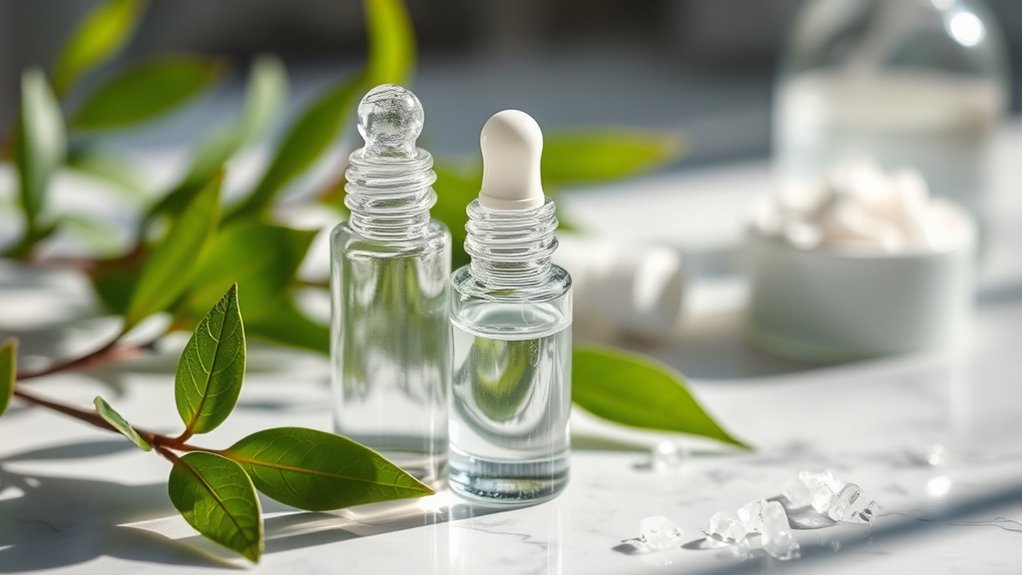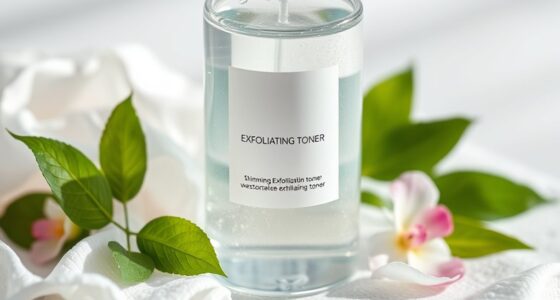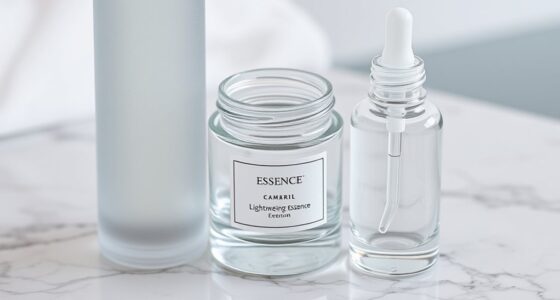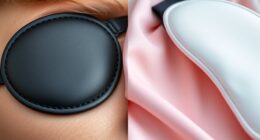Glycolic acid is an incredible exfoliant that’ll elevate your skincare routine. Its small molecule size penetrates deeply, breaking down dead skin cells and unclogging pores for a clearer complexion. Not only does it help reduce fine lines and wrinkles, but it also brightens your skin while combating acne. Incorporate it gradually into your regimen, starting with gentler cleansers. If you want to know more about how to harness its full potential, keep looking into the benefits and usage tips.
Key Takeaways
- Glycolic Acid is a potent Alpha Hydroxy Acid that penetrates deeply to exfoliate the skin effectively.
- It promotes clearer complexions by breaking down dead skin cell bonds and unclogging pores.
- Regular use can minimize fine lines, wrinkles, and the appearance of pores for a more youthful look.
- Ideal for treating acne, it helps prevent breakouts while controlling excess oil production.
- Incorporate Glycolic Acid gradually in your skincare routine for optimal results and healthier skin.

Glycolic Acid 101
When it comes to achieving radiant skin, understanding Glycolic Acid can be your secret weapon. This powerful Alpha Hydroxy Acid (AHA) is derived from natural sources like sugar cane, although it’s often synthesized for enhanced potency. Glycolic Acid’s small molecular size allows it to penetrate deeper into the skin compared to other AHAs, making it a favorite among skincare enthusiasts. Essential oils can also complement your skincare routine, promoting overall skin health. Additionally, storing these oils properly can help maintain their potency. Furthermore, incorporating essential oils with antibacterial properties into your regimen can provide added benefits.
Unlock radiant skin with Glycolic Acid, a potent AHA that penetrates deeply for transformative results.
Whether you want to incorporate it into your routine through cleansers, toners, serums, or masks, Glycolic Acid offers versatility that can fit seamlessly into your regimen. Glycolic acid aids in exfoliation, promoting scalp health as well.
One of the standout benefits of Glycolic Acid is its exfoliant properties. It breaks down the bonds between dead skin cells, effectively removing them from the skin’s surface. This action not only promotes a clearer complexion but also aids in reducing acne. By freeing clogged pores and clearing away the buildup of dead skin and oil, Glycolic Acid helps minimize breakouts, making it a reliable ally in your battle against acne. Additionally, it contains 5% Witch Hazel to minimize excess oil, enhancing its effectiveness. Regular use can also reduce the appearance of pores, leading to a more refined skin texture.
If you struggle with blackheads, this acid is particularly effective, as it prevents dead skin cells from clogging pores and contributes to smoother skin.
But the benefits don’t stop at acne. Glycolic Acid also plays a significant role in anti-aging. As you age, fine lines and wrinkles become more pronounced, and sun damage can take its toll. Glycolic Acid promotes collagen production, helping to reduce the appearance of these fine lines. Additionally, it works wonders in fading sun damage, leaving your skin looking rejuvenated and fresh.
You can even apply Glycolic Acid to body areas prone to acne, like your chest and back, for similar positive effects. Its effectiveness varies by concentration, so whether you’re starting with a gentle cleanser or diving into stronger peels, you can tailor your approach based on your skin’s needs.
For best results, consider using Glycolic Acid alongside other acne treatments or as part of a thorough skincare routine.
Incorporating Glycolic Acid into your skincare arsenal can transform your skin, providing the exfoliation and rejuvenation it craves. By understanding its properties and benefits, you’re not just investing in a product; you’re embracing a path to healthier, more radiant skin.
Frequently Asked Questions
Can Glycolic Acid Be Used on Sensitive Skin?
Yes, you can use glycolic acid on sensitive skin, but you need to be cautious.
Start with low concentrations and gradually increase if your skin tolerates it. Always perform a patch test before applying it widely, and consider using it at night to minimize sun sensitivity.
Moisturizing afterward is essential to help strengthen your skin barrier. If irritation occurs, stop use and consult a dermatologist for tailored advice.
How Often Should I Use Glycolic Acid?
You should start using glycolic acid every third evening if you’re new to it.
As your skin gets used to the product, you can gradually increase the frequency.
If you’re using lower concentrations (around 5%), feel free to use it more often.
For higher concentrations (10-20%), limit your use to once or twice a week.
Always remember to apply SPF during the day, as glycolic acid can make your skin more sensitive to sunlight.
Is Glycolic Acid Safe for Pregnant Women?
Glycolic acid’s gentle glow can be a great option for pregnant women, but you’ve got to take precautions.
Generally, it’s safe in concentrations under 10%, with minimal risks to you and your baby. However, it’s wise to consult your healthcare provider first and start slow.
If your skin’s sensitive, tread lightly! Always wear sunscreen afterward to shield your skin from sun damage.
Safety first guarantees a happy, healthy glow during your pregnancy!
Can I Use Glycolic Acid With Retinol?
Yes, you can use glycolic acid with retinol, but it’s important to do so carefully.
Start by alternating their application days to minimize irritation. Glycolic acid exfoliates the surface, while retinol works deeper, enhancing overall skin benefits.
Begin with lower concentrations of both to build tolerance, and always follow with a moisturizer and sunscreen.
If you notice excessive irritation, consider consulting a dermatologist for personalized advice on combining these powerful ingredients.
What Should I Avoid After Using Glycolic Acid?
After using glycolic acid, avoid exercising and sweating for a few hours to prevent irritation.
Stay out of saunas and avoid any pressure on the treated skin.
Protect your skin from sun damage by applying SPF 30 sunscreen daily and avoiding direct sunlight for at least a week.
Don’t mix glycolic acid with other exfoliants or harsh chemicals, and stick to gentle cleansers and fragrance-free moisturizers for best recovery.
Conclusion
Incorporating glycolic acid into your skincare routine can transform your complexion, revealing smoother, brighter skin. Imagine Sarah, who struggled with dullness and uneven texture. After using a glycolic acid toner for just a month, she noticed a remarkable difference—her skin felt softer, looked radiant, and her confidence soared. By making glycolic acid your exfoliation ally, you’re not just treating your skin; you’re investing in a more vibrant you. Give it a try and see the results for yourself!









